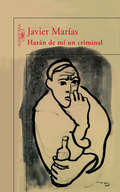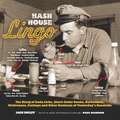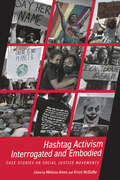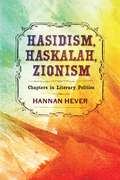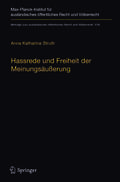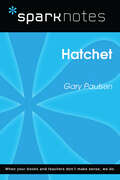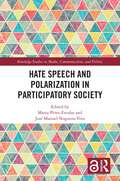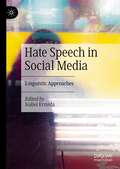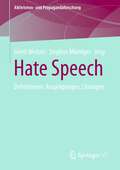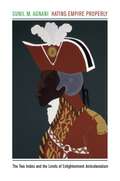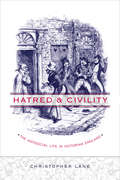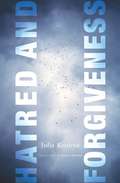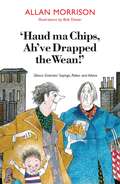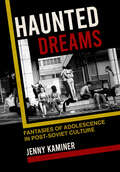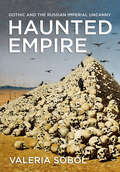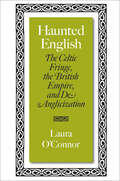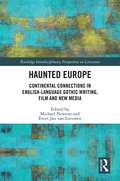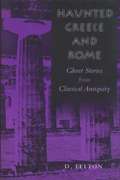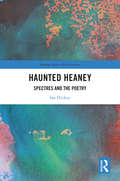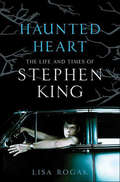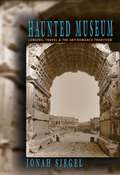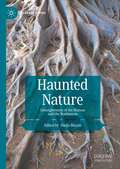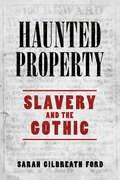- Table View
- List View
Harán de mí un criminal
by Javier MaríasEste volumen recoge noventa y seis artículos publicados entre febrero de 2001 y diciembre de 2002, así como un «inédito censurado», que motivó la marcha de Javier Marías del suplemento dominical en el que llevaba colaborando ocho años. En ese casi centenar de piezas, el autor reflexiona sobre nuestro tiempo (anterior y posterior a la caída de las Torres Gemelas), evoca a personas desaparecidas y retrata a algunas vivas, bromea con quien fue su «vecino de página» Arturo Pérez-Reverte, desarma falsas creencias y razonamientos hoy imperantes, y despliega a menudo una sana impertinencia y una osada irreverencia que sin embargo atenúa, las más de las veces, su agudo humor. Varios son los motivos para haber elegido el título Harán de mí un criminal, según el propio Marías: «Algo criminal se siente uno siempre cuando es objeto de censura. Cada vez es más difícil no incurrir en algún tipo de criminalidad en nuestras sociedades tan dadas a inventar nuevos delitos. Veo que poco a gusto resulto estar con los tiempos presentes, y no sería extraño que ese desasosiego y ese desagrado me llevaran pronto a delinquir. Haber opinado todos los domingos a lo largo de ocho años es algo sin duda excesivo, y que probablemente ya me convierta en un auténtico criminal». A esto último sólo cabe añadir que la mayoría de sus lectores se alegrarán de su capacidad delictiva y seguramente lo absolverán.
Hash House Lingo: The Slang of Soda Jerks, Short-Order Cooks, Bartenders, Waitresses, Carhops and Other Denizens of Ye
by Paul Dickson Scott Russo Jack SmileyOriginally published in 1941, this pocket-sized treasury preserves the language of diners and roadside restaurants during their golden age in the '30s and '40s. From "all hot" (baked potato) and "dog soup" (water) to "perk" (coffee) and "first lady" (spare ribs), the long-lost terms are fascinating, funny, and sometimes politically incorrect by today's standards. Historic photos from the Library of Congress add nostalgic appeal.
Hashtag Activism Interrogated and Embodied: Case Studies on Social Justice Movements
by Melissa Ames Kristi McDuffieHashtag Activism Interrogated and Embodied analyzes the ways that hashtags repurpose and reclaim societal narratives, considering how these digital interactions carry over into external spaces and are embodied by both participants and spectators alike. A diverse set of contributors from a range of disciplines utilize a variety of methodologies to interrogate the lifespan and trajectories of specific hashtag campaigns, study rhetorical strategies engaged by online communities, and analyze how hashtags are employed for particular purposes. The chapters capture twenty-first-century digital activism unfolding in different social and geopolitical climates. Delving into hashtag activism in various forms (tweets, memes, and personal narratives) and spaces (Twitter, Facebook, and in-person protests), these chapters reveal how participants question and construct online and offline identities and imagined and actualized communities. They also showcase the complicated ways hashtag activism intersects with consumer, popular, and celebrity cultures. Hashtag Activism Interrogated and Embodied calls for broader inclusion in what is considered hashtag activism, such as digital fandom, how hashtags are co-opted for nefarious purposes, the effects of anti-activism, and the role of journalism and the media. It will appeal to a range of disciplines including rhetoric and composition, internet studies, communication studies, media studies, feminist studies, affect studies, cultural studies, technical communication, and sociology. Contributors: Robert Barry, André Brock, Elizabeth Buchanan, Rosemary Clark-Parsons, Gabriel I. Green, Neha Gupta, Jeffrey J. Hall, Kyesha Jennings, Morgan K. Johnson, Salma Kalim, Megan McIntyre, Sean Milligan, Avishek Ray, Sarah Riddick, Stephanie Vie, Erin B. Waggoner, Holly M. Wells, William I. Wolff You can use only one pair of em dashes in a sentence. :(
Hasidism, Haskalah, Zionism: Chapters in Literary Politics (Jewish Culture and Contexts)
by Hannan HeverHasidism, Haskalah, Zionism reveals how political and literary dialogues and conflicts between the Hebrew literature of the Hasidism, the Jewish Enlightenment, and Zionism interacted with each other in the nineteenth century. Hannan Hever uses postcolonial theories and theories of nationality to analyze how Jews used literature to make sense of hostility directed toward Jews from their European “host” countries and to set forth their own ideas and preferences regarding their status, control, and treatment. In doing so, Hever theorizes the Enlightenment’s intellectual aims and cultural influences, tracking how the models of integration crucial to Haskalah gave way to Jewish nationalism in the twentieth century.The readings in this book are theoretically informed, setting forward novel claims based on detailed textual analyses of hasidic tales, Haskalah satires, and Zionist narratives. Thus, this book tackles a major interpretative problem visible at the core of modern Hebrew literature—its radical difficulty in distinguishing between the theological components of modern Jewish discourse and its national identity.
Hassrede und Freiheit der Meinungsäußerung: Der Schutzbereich der Meinungsäußerungsfreiheit in Fällen demokratiefeindlicher Äußerungen nach der Europäischen Menschenrechtskonvention, dem Grundgesetz und der Charta der Grundrechte der Europäischen Union (Beiträge zum ausländischen öffentlichen Recht und Völkerrecht #278)
by Anna Katharina StruthDieses Buch analysiert den grundrechtlichen Schutzbereich der Garantien der Meinungsäußerungsfreiheit in den Grundrechtskatalogen der EMRK, des Grundgesetzes und der Grundrechtecharta der EU. Das Werk untersucht, inwieweit Hassreden und vergleichbare demokratiefeindliche Äußerungen vom Schutzbereich der Meinungsäußerungsfreiheit umfasst sind. Die Autorin setzt sich mit der zu diesen Äußerungen ergangenen Rechtsprechung der zuständigen Gerichte auseinander. Sie kommt über ausführliche Auslegungserwägungen zu den relevanten Bestimmungen zum Ergebnis, dass die Äußerungen, auch wenn sie einen Grundrechtsmissbrauch darstellen, im Schutzbereich der Meinungsäußerungsfreiheit liegen und ihr Verbot einen rechtfertigungsbedürftigen Eingriff in das Grundrecht darstellt. Diese Schlussfolgerung wird mit der Feststellung verbunden, dass die Anforderungen an die Rechtfertigung eines solchen Eingriffs wegen der in diesen Fällen typischerweise vorliegenden Interessenlage regelmäßig erfüllt werden können.
Hatchet (SparkNotes Literature Guide Series)
by SparkNotesHatchet (SparkNotes Literature Guide) by Gary Paulsen Making the reading experience fun! Created by Harvard students for students everywhere, SparkNotes is a new breed of study guide: smarter, better, faster.Geared to what today's students need to know, SparkNotes provides:chapter-by-chapter analysis explanations of key themes, motifs, and symbols a review quiz and essay topics Lively and accessible, these guides are perfect for late-night studying and writing papers.
Hate Speech and Polarization in Participatory Society (Routledge Studies in Media, Communication, and Politics)
by Marta Pérez-Escolar José Manuel Noguera-VivoThis timely volume offers a comprehensive and rigorous overview of the role of communication in the construction of hate speech and polarization in the online and offline arena. Delving into the meanings, implications, contexts and effects of extreme speech and gated communities in the media landscape, the chapters analyse misleading metaphors and rhetoric via focused case studies to understand how we can overcome the risks and threats stemming from the past decade’s defining communicative phenomena. The book brings together an international team of experts, enabling a broad, multidisciplinary approach that examines hate speech, dislike, polarization and enclave deliberation as cross axes that influence offline and digital conversations. The diverse case studies herein offer insights into international news media, television drama and social media in a range of contexts, suggesting an academic frame of reference for examining this emerging phenomenon within the field of communication studies. Offering thoughtful and much-needed analysis, this collection will be of great interest to scholars and students working in communication studies, media studies, journalism, sociology, political science, political communication and cultural industries.
Hate Speech in Social Media: Linguistic Approaches
by Isabel ErmidaThis edited book offers insight into the linguistic construction of prejudice and discrimination in social media. Drawing on the outputs of a three-year research project, NETLANG, involving scholars from five European countries (Portugal, Czech Republic, Estonia, Finland and Poland), as well as on external contributions from participants in the project’s final conference, the collection brings together a variety of linguistic approaches to the study of online hate speech, ranging from Pragmatics to Syntax, Lexis, Stylistics, Natural Language Processing (NLP) and Corpus Linguistics. Data from English, Portuguese, Danish, Lithuanian, Persian, Polish, and Slovenian are examined, along with various geopolitical contexts for hate speech, especially anti-refugee and anti-immigrant discourse. The authors explore a continuum of overt to covert textual data, namely: (i) structural elements, such as syntactic and morphological patterns found to recur throughout the texts; (ii) lexical and stylistic elements, revealing the often implicit ways vocabulary choices and rhetorical devices signal the expression of hate; and (iii) interactional elements, concerning the pragmatic relationships established in online communicative exchanges. The chapters cover numerous types of prejudice, such as sexism, nationalism, racism, antisemitism, religious intolerance, ageism, and homo/transphobia. The book will be of interest to an academic readership in Linguistics, Media Studies, Communication Studies, and Social Sciences.
Hate Speech: Definitionen, Ausprägungen, Lösungen (Aktivismus- und Propagandaforschung)
by Universität HamburgHate Speech ist Alltag, egal ob auf der Straße, im Parlament oder im Netz. Menschen werden beleidigt, entwürdigt und man ruft zu Gewalt auf. Die Folgen sind unübersehbar. Hate Speech ist so zu einem gesellschaftsbedrohenden Phänomen avanciert, befeuert durch politische und soziale Krisen wie die Flüchtlingskrise 2015/16 und die Corona-Pandemie 2020/21. Mit diesem Sammelband möchten wir einen Beitrag zu einer strukturierten Reflexion des Phänomens leisten. Dabei werden sprachliche Indikatoren von Hassrede, die Bedeutung von digitaler Kommunikation für Hass und Hetze sowie öffentliche Kommunikation und Hate Speech in der Praxis diskutiert. Ebenso setzt der Band sich mit möglichen politischen, rechtlichen, journalistischen sowie zivilgesellschaftlichen Handlungsoptionen auseinander. Einen besonderen Fokus legen wir dabei auf die journalistische Bearbeitung und digitale Verbreitung von Hate Speech.
Hating Empire Properly: The Two Indies and the Limits of Enlightenment Anticolonialism
by Sunil M. AgnaniIn Hating Empire Properly, Sunil Agnani produces a novel attempt to think the eighteenth-century imagination ofthe West and East Indies together, arguing that this is how contemporary thinkers Edmund Burke and DenisDiderot actually viewed them. This concern with multiple geographical spaces is revealed to be a largelyunacknowledged part of the matrix of Enlightenment thought in which eighteenth-century European and American self-conceptions evolved. By focusing on colonial spaces of the Enlightenment, especially India and Haiti, he demonstrates how Burke's fearful view of the French Revolution—the defining event of modernity— as shaped by prior reflection on these other domains. Exploring with sympathy the angry outbursts against injustice in the writings of Diderot, he nonetheless challenges recent understandings of him as a univocal critic of empire by showing the persistence of a fantasy of consensual colonialism in his thought. By looking at the impasses and limits in the thought of both radical and conservative writers, Agnani asks what it means to critique empire “properly.” Drawing his method from Theodor Adorno’s quip that “one must have tradition in oneself, in order to hate it properly,” he proposes a critical inhabiting of dominant forms of reason as a way forward for the critique of both empire and Enlightenment.Thus, this volume makes important contributions to political theory, history, literary studies, American studies, and postcolonial studies.
Hatred and Civility: The Antisocial Life in Victorian England
by Christopher LaneChristopher Lane is professor of English at Northwestern University. He is the author of The Ruling Passion and The Burdens of Intimacy: Psychoanalysis and Victorian Masculinity and the editor of The Psychoanalysis of Race (Columbia, 1998).
Hatred and Civility: The Antisocial Life in Victorian England
by Christopher LaneTo understand hatred and civility in today's world, argues Christopher Lane, we should start with Victorian fiction. Although the word "Victorian" generally brings to mind images of prudish sexuality and well-heeled snobbery, it has above all become synonymous with self-sacrifice, earnest devotion, and moral rectitude. Yet this idealized version of Victorian England is surprisingly scarce in the period's literature--and its journalism, sermons, poems, and plays--where villains, hypocrites, murderers, and cheats of all types abound.
Hatred and Forgiveness (European Perspectives: A Series in Social Thought and Cultural Criticism)
by Julia KristevaJulia Kristeva refracts the impulse to hate (and our attempts to subvert, sublimate, and otherwise process it) through psychoanalysis and text, exploring worlds, women, religion, portraits, and the act of writing. Her inquiry spans themes, topics, and figures central to her writing, and her paths of discovery advance the theoretical innovations that are so characteristic of her thought.Kristeva rearticulates and extends her analysis of language, abjection, idealization, female sexuality, love, and forgiveness. She examines the "maladies of the soul," utilizing examples from her practice and the ailments of her patients, such as fatigue, irritability, and general malaise. She sources the Bible and texts by Marguerite Duras, St. Teresa of Avila, Roland Barthes, Simone de Beauvoir, and Georgia O'Keefe. Balancing political calamity and individual pathology, she addresses internal and external catastrophes and global and personal injuries, confronting the nature of depression, obliviousness, fear, and the agony of being and nothingness. Throughout Kristeva develops the notion that psychoanalysis is the key to serenity, with its processes of turning back, looking back, investigating the self, and refashioning psychical damage into something useful and beautiful. Constant questioning, Kristeva contends, is essential to achieving the coming to terms we all seek at the core of forgiveness.
Haud Ma Chips, Ah've Drapped the Wean!: Glesca Grannies' Sayings, Patter and Advice
by Bob Dewar Allan MorrisonAn hilarious and often wise collection of Scots saying straight from the mouths of the Grannies of Glasgow. With each snippet accompanied by a straightforward English translation, this is your introduction to the unique wisdom of the 'Glesca Granny'.
Haunted Dreams: Fantasies of Adolescence in Post-Soviet Culture (NIU Series in Slavic, East European, and Eurasian Studies)
by Jenny KaminerHaunted Dreams is the first comprehensive study in English devoted to cultural representations of adolescence in Russia since the end of the Soviet Union in 1991. Jenny Kaminer situates these cultural representations within the broader context of European and Anglo-American scholarship on adolescence and youth, and she explores how Russian writers, dramatists, and filmmakers have repeatedly turned to the adolescent protagonist in exploring the myriad fissures running through post-Soviet society. Through close analysis of prose, drama, television, and film, this book maps how the adolescent hero has become a locus for multiple anxieties throughout the tumultuous years since the end of the Soviet experiment. Kaminer also directly addresses some of the pivotal questions facing scholars of post-Soviet Russia: Have Soviet cultural models been transcended? Or do they continue to dominate? The figure of the adolescent, an especially potent and enduring source of cultural mythology throughout the Soviet years, provides provocative material for exploring these questions. In Haunted Dreams, Kaminer employs a historical approach to reveal how fantasies of adolescence have mutated and remained constant across the Soviet/post-Soviet divide, focusing on violence, temporality, and gender and the body. Some of the works discussed present the possibility of salvaging the model of the heroic adolescent for a new society. Others, by contrast, relegate this figure to the dustbin of history by evoking disgust or horror, or by unmasking the tragic consequences that ensue from the combination of adolescence, violence, and fantasy.
Haunted Empire: Gothic and the Russian Imperial Uncanny (NIU Series in Slavic, East European, and Eurasian Studies)
by Valeria SobolHaunted Empire shows that Gothic elements in Russian literature frequently expressed deep-set anxieties about the Russian imperial and national identity.Valeria Sobol argues that the persistent presence of Gothic tropes in the literature of the Russian Empire is a key literary form that enacts deep historical and cultural tensions arising from Russia's idiosyncratic imperial experience. Her book brings together theories of empire and colonialism with close readings of canonical and less-studied literary texts as she explores how Gothic horror arises from the threatening ambiguity of Russia's own past and present, producing the effect Sobol terms "the imperial uncanny." Focusing on two spaces of the imperial uncanny—the Baltic north/Finland and the Ukrainian south—Haunted Empire reconstructs a powerful discursive tradition that reveals the mechanisms of the Russian imperial imagination that are still at work today.
Haunted English: The Celtic Fringe, the British Empire, and De-Anglicization
by Laura O'ConnorHaunted English explores the role of language in colonization and decolonization by examining how Anglo-Celtic modernists W. B. Yeats, Hugh MacDiarmid, and Marianne Moore "de-Anglicize" their literary vernaculars. Laura O'Connor demonstrates how the poets’ struggles with and through the colonial tongue are discernible in their signature styles, using aspects of those styles to theorize the dynamics of linguistic imperialism—as both a distinct process and an integral part of cultural imperialism. O'Connor argues that the advance of the English Pale and the accompanying translation of the receding Gaelic culture into a romanticized Celtic Fringe represents multilingual British culture as if it were exclusively English-speaking and yet registers, on a subliminal level, some of the cultural losses entailed by English-only Anglicization. Taking the fin-de-siècle movements of the Gaelic revival and the Irish Literary Renaissance as her point of departure, O'Connor examines the effort to undo cultural cringe through language and literary activism.
Haunted English: The Celtic Fringe, the British Empire, and De-Anglicization
by Laura O'ConnorA study of how English’s colonial history inflects the literary vernaculars of Anglo-Celtic modernists W. B. Yeats, Hugh MacDiarmid, and Marianne Moore.Haunted English explores the role of language in colonization and decolonization by examining how Anglo-Celtic modernists W. B. Yeats, Hugh MacDiarmid, and Marianne Moore “de-Anglicize” their literary vernaculars. Laura O’Connor demonstrates how the poets’ struggles with and through the colonial tongue are discernible in their signature styles, using aspects of those styles to theorize the dynamics of linguistic imperialism—as both a distinct process and an integral part of cultural imperialism.O’Connor argues that the advance of the English Pale and the accompanying translation of the receding Gaelic culture into a romanticized Celtic Fringe represents multilingual British culture as if it were exclusively English-speaking and yet registers, on a subliminal level, some of the cultural losses entailed by English-only Anglicization. Taking the fin-de-siècle movements of the Gaelic revival and the Irish Literary Renaissance as her point of departure, O’Connor examines the effort to undo cultural cringe through language and literary activism.“This is a promising contribution to an expanding discipline.” —Paul Shanks, Comparative Literature Studies“Laura O’Connor has written a distinguished and groundbreaking study.” —Murray Pittock, Clio“Smart, engaging, and intellectually provocative.” —Rob Doggett, Victorian Studies“An often brilliant account of how three modernist poetries contributed to the global decline of Anglocentrism . . . Essential for anyone looking for fresh interpretations of Yeats, MacDiarmid, or Moore, it will also interest readers concerned with the promises and challenges of writing transnational literary criticism.” —Matthew Hart, Modernism/Modernity“Insightful, scintillating, attentive to every nuance . . . O’Connor’s study will reward greatly anyone interested in the critical revivalism that is both her subject and her inheritance.” —Gregory Castle, Irish Literary Supplement“Valuable and original work that participates in some of the most exciting and forward-looking trends in current Irish and literary studies.” —Marjorie Howes, Boston College, author of Yeats’s Nations: Gender, Class, and Irishness
Haunted Europe: Continental Connections in English-Language Gothic Writing, Film and New Media (Routledge Interdisciplinary Perspectives on Literature)
by Michael Newton Evert Jan van LeeuwenHaunted Europe offers the first comprehensive account of the British and Irish fascination with a Gothic vision of continental Europe, tracing its effect on British intellectual life from the birth of the Gothic novel, to the eve of Brexit, and the symbolic recalibration of the UK’s relationship to mainland Europe. By focusing on the development of the relationship between Britain and Ireland and continental Europe over more than two-hundred years, this collection marks an important departure from standard literary critical narratives, which have tended to focus on a narrow time-period and have missed continuities and discontinuities in our ongoing relationship with the mainland.
Haunted Greece And Rome: Ghost Stories from Classical Antiquity
by D. FeltonStories of ghostly spirits who return to this world to warn of danger, to prophesy, to take revenge, to request proper burial, or to comfort the living fascinated people in ancient times just as they do today. In this innovative, interdisciplinary study, the author combines a modern folkloric perspective with literary analysis of ghost stories from classical antiquity to shed new light on the stories' folk roots. The author begins by examining ancient Greek and Roman beliefs about death and the departed and the various kinds of ghost stories which arose from these beliefs. She then focuses on the longer stories of Plautus, Pliny, and Lucian, which concern haunted houses. Her analysis illuminates the oral and literary transmission and adaptation of folkloric motifs and the development of the ghost story as a literary form. In her concluding chapter, the author also traces the influence of ancient ghost stories on modern ghost story writers, a topic that will interest all readers and scholars of tales of hauntings.
Haunted Heaney: Spectres and the Poetry (Routledge Studies in Irish Literature)
by Ian HickeyHaunted Heaney: Spectres and the Poetry looks at the ghosts and spectres present within the poetry of the Nobel Prize winning poet Seamus Heaney. Covering Heaney’s work from his first collection, Death of a Naturalist, to his final collection, Human Chain, this volume analyses Heaney’s poetry through the lens of hauntology as presented by Jacques Derrida in Specters of Marx. This book presents spectres and ghosts not in the conventional sense, as purely supernatural, physical manifestations haunting a place, but instead as having a non-physical presence. In this sense past cultures, societies, texts, poets, and memories are examined as having a spectral influence on Heaney’s writing. His work is indebted to hauntedness as the past in all its forms sutures itself within the present of his thinking and writing, and our reading of the poetry. Topics for discussion include the Norse spectres in the early poetry; British colonialism and its haunting influence on the poet; a renewed look at the bog poems as being influenced by the spectral; the classical influence of Virgil and Dante; and a reading of ‘Route 110’ that incorporates the major instances of Heaney’s career into a singular poem. The book also incorporates Heaney’s prose work and interviews into the discussion and uses these works as a metacommentary to the poetry offering a deeper insight into the mind of one of Ireland’s greatest writers.
Haunted Heart: The Life and Times of Stephen King
by Lisa RogakA fascinating look at the life of the author who created such modern classics as Carrie, IT, and The Shining.One of the most prolific and popular authors in the world today, Stephen King has become part of pop culture history. But who is the man behind those tales of horror, grief, and the supernatural? Where do these ideas come from? And what drives him to keep writing at a breakneck pace after a thirty year career? In this unauthorized biography, Lisa Rogak reveals the troubled background and lifelong fears that inspire one of the twentieth century's most influential authors. King's origins were inauspicious at best. His impoverished childhood in rural Maine and early marriage hardly spelled out the likelihood of a blossoming literary career. But his unflagging work ethic and a ceaseless flow of ideas put him on the path to success. It came in a flash, and the side effects of sudden stardom and seemingly unlimited wealth soon threatened to destroy his work and, worse, his life. But he survived and has since continued to write at a level of originality few authors could ever hope to match. Despite his dark and disturbing work, Stephen King has become revered by critics and his countless fans as an all-American voice more akin to Mark Twain than H. P. Lovecraft. Haunted Heart chronicles his story, revealing the character of a man who has created some of the most memorable---and frightening---stories found in literature today. Stephen King on Stephen King:"I'm afraid of everything.""As a kid, I worried about my sanity a lot.""I am always interested in this idea that a lot of fiction writers write for their fathers because their fathers are gone.""Writing is an addiction for me.""I married her for her body, though she said I married her for her typewriter.""When you get into this business, they don't tell you you'll get cat bones in the mail." "You have to be a little nuts to be a writer.""There's always the urge to see somebody dead that isn't you."
Haunted Museum: Longing, Travel, and the Art - Romance Tradition
by Jonah SiegelFor centuries, southern Europe, and Italy in particular, has offered writers far more than an evocative setting for important works of literature. The voyage south has been an integral part of the imagination of inspiration. Haunted Museum is a groundbreaking, in-depth look at fantasies of Italy from the late eighteenth to the early twentieth centuries, focusing on a literary tradition Jonah Siegel terms the "art romance"--the fantastic voyage south understood as the register of an ambivalent desire for art and a heightened experience of reality. Siegel argues that Italy's allure derives not only from its celebrated promise of unique natural beauty and prized antiquities, but from the opportunity it offers writers to place themselves in relation to a web of prior accounts of travel to the native land of genius. Beginning with Goethe as the founding figure of the tradition, Haunted Museum moves from a rich reframing of literature from the first half of the nineteenth century--including new readings of works by Byron, de Staël, Barrett Browning, and others--to an ambitious examination of Henry James's well-known engagement with Europe, newly understood as a response to this important literary legacy. Readings of works by Freud, Forster, Mann, and Proust demonstrate the longevity of the tradition of looking to Italy for the representation of desires as impossible to satisfy as they are to deny.
Haunted Nature: Entanglements of the Human and the Nonhuman (Palgrave Gothic)
by Sladja BlazanThis volume is a study of human entanglements with Nature as seen through the mode of haunting. As an interruption of the present by the past, haunting can express contemporary anxieties concerning our involvement in the transformation of natural environments and their ecosystems, and our complicity in their collapse. It can also express a much-needed sense of continuity and relationality. The complexity of the question—who and what gets to be called human with respect to the nonhuman—is reflected in these collected chapters, which, in their analysis of cinematic and literary representations of sentient Nature within the traditional gothic trope of haunting, bring together history, race, postcolonialism, and feminism with ecocriticism and media studies. Given the growing demand for narratives expressing our troubled relationship with Nature, it is imperative to analyze this contested ground.
Haunted Property: Slavery and the Gothic
by Sarah Gilbreath FordWinner of a 2021 South Central Modern Language Association Book PrizeAt the heart of America’s slave system was the legal definition of people as property. While property ownership is a cornerstone of the American dream, the status of enslaved people supplies a contrasting American nightmare. Sarah Gilbreath Ford considers how writers in works from nineteenth-century slave narratives to twenty-first-century poetry employ gothic tools, such as ghosts and haunted houses, to portray the horrors of this nightmare. Haunted Property: Slavery and the Gothic thus reimagines the southern gothic, which has too often been simply equated with the macabre or grotesque and then dismissed as regional. Although literary critics have argued that the American gothic is driven by the nation’s history of racial injustice, what is missing in this critical conversation is the key role of property. Ford argues that out of all of slavery’s perils, the definition of people as property is the central impetus for haunting because it allows the perpetration of all other terrors. Property becomes the engine for the white accumulation of wealth and power fueled by the destruction of black personhood. Specters often linger, however, to claim title, and Ford argues that haunting can be a bid for property ownership. Through examining works by Harriet Jacobs, Hannah Crafts, Mark Twain, Herman Melville, Sherley Anne Williams, William Faulkner, Eudora Welty, Toni Morrison, Octavia Butler, and Natasha Trethewey, Ford reveals how writers can use the gothic to combat legal possession with spectral possession.
